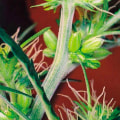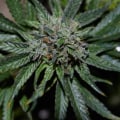Cannabis (genus Cannabis), a genus of medicinal, recreational and fiber plants belonging to the Cannabaceae family. According to some classifications, the genus Cannabis comprises a single species, hemp (Cannabis sativa), a robust, aromatic and erect annual herb that originated in Central Asia and is now cultivated worldwide. Cannabis refers to a group of three plants with psychoactive properties, known as Cannabis sativa, Cannabis indica and Cannabis ruderalis. The current climate and economic scenario drives the use of sustainable resources to reduce our dependence on petrochemicals and minimize the impact on the environment.
Plants are precious natural resources, because they can supply both phytochemical and lignocellulosic biomass. In this review, we focus on hemp (Cannabis sativa L.) We deal with aspects related to the use of hemp biomass and, more broadly, those related to its wide variety of phytochemicals. The propagation, characterization and optimization of Cannabis Sativa L. Also known as “buds”, the flowers of a cannabis plant are the fruit of its labor.
They contain the cannabinoids and terpenes that place it or offer health benefits. Flowers only grow on female cannabis plants and must be dried before consumption. According to the National Institute on Drug Abuse, people who start using cannabis before age 18 are four to seven times more likely to develop a cannabis use disorder than those who start using it later in life. Medical cannabis specifically involves the use of the cannabis plant to treat a growing list of medical conditions, such as epilepsy, neuropathic pain and multiple sclerosis.
Zammit's group also sought evidence of an interaction between cannabis use and the COMT genotype by restricting the analysis to participants who claimed to have used cannabis for the first time in the same cut-off period as the Caspi group, but found no evidence to support the relationship. Cannabis cultivation is tightly regulated in many countries, so alternative in vitro growth techniques are receiving a lot of attention. More attention is now being paid to the active components of cannabis without THC, which can act synergistically and contribute to the pharmacological power and entourage effects of the medicinal-based cannabis extract (Russo, 201. The plant is also known as hemp, although this term is often used to refer only to varieties of Cannabis grown for drug-free use. Cannabis plants produce a large amount of chemicals as part of their defense against herbivory, see Chemical Defenses in Cannabis.
Medical cannabis (or medical marijuana) refers to the use of cannabis and its constituent cannabinoids, in an effort to treat diseases or improve symptoms. Whether narcotic and non-pharmacological, cultivated and wild types of cannabis constitute a single and highly variable species, or whether the genus is polytypic with more than one species, has been the subject of debate for more than two centuries. An investigation of genetic, morphological and chemotaxonomic variation among 157 cannabis accessions of known geographical origin, including fiber, drug and wild animal populations, showed cannabinoid variation in cannabis germplasm. The scientific debate on taxonomy has had little effect on terminology that is widely used among growers and users of drug-type cannabis.






